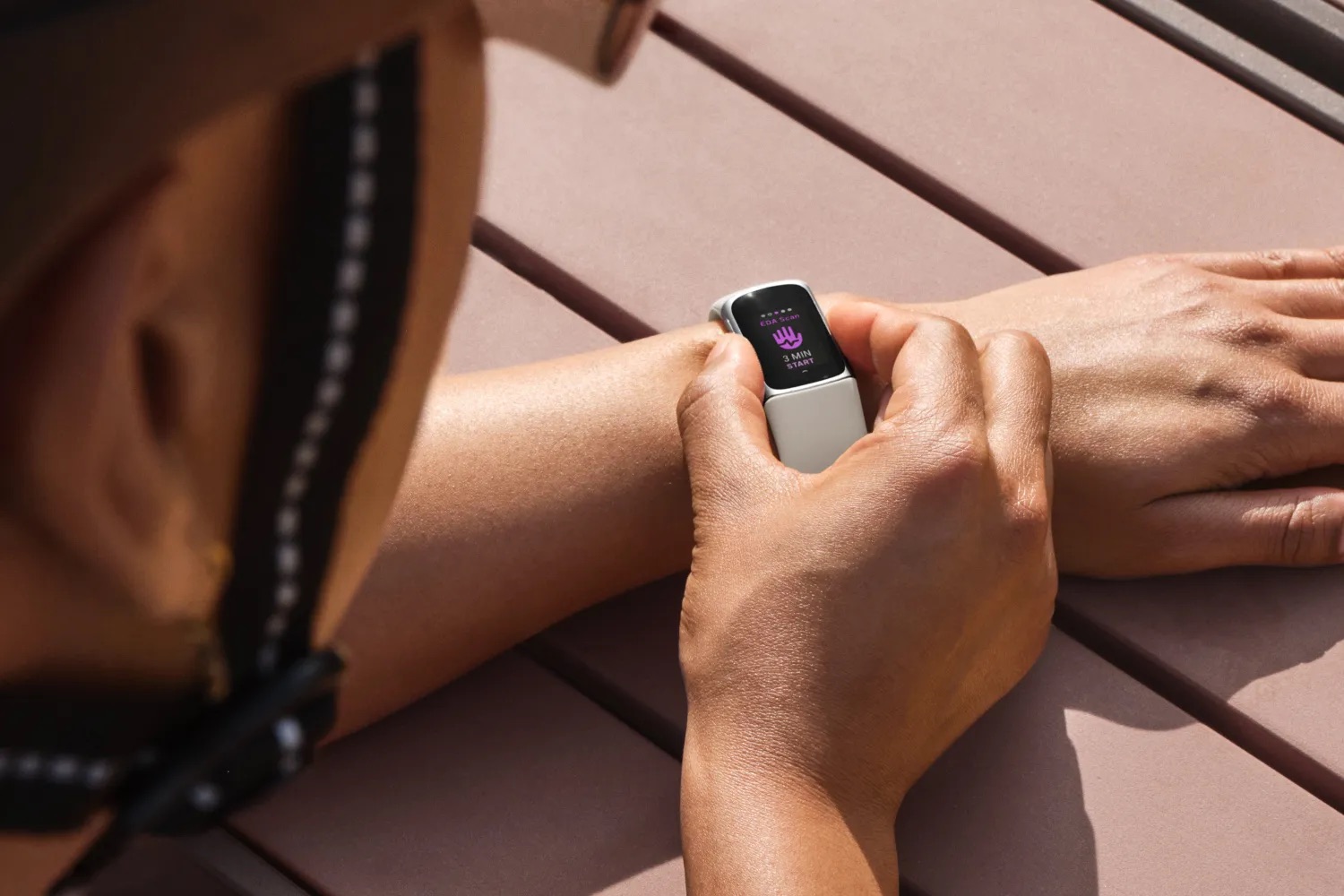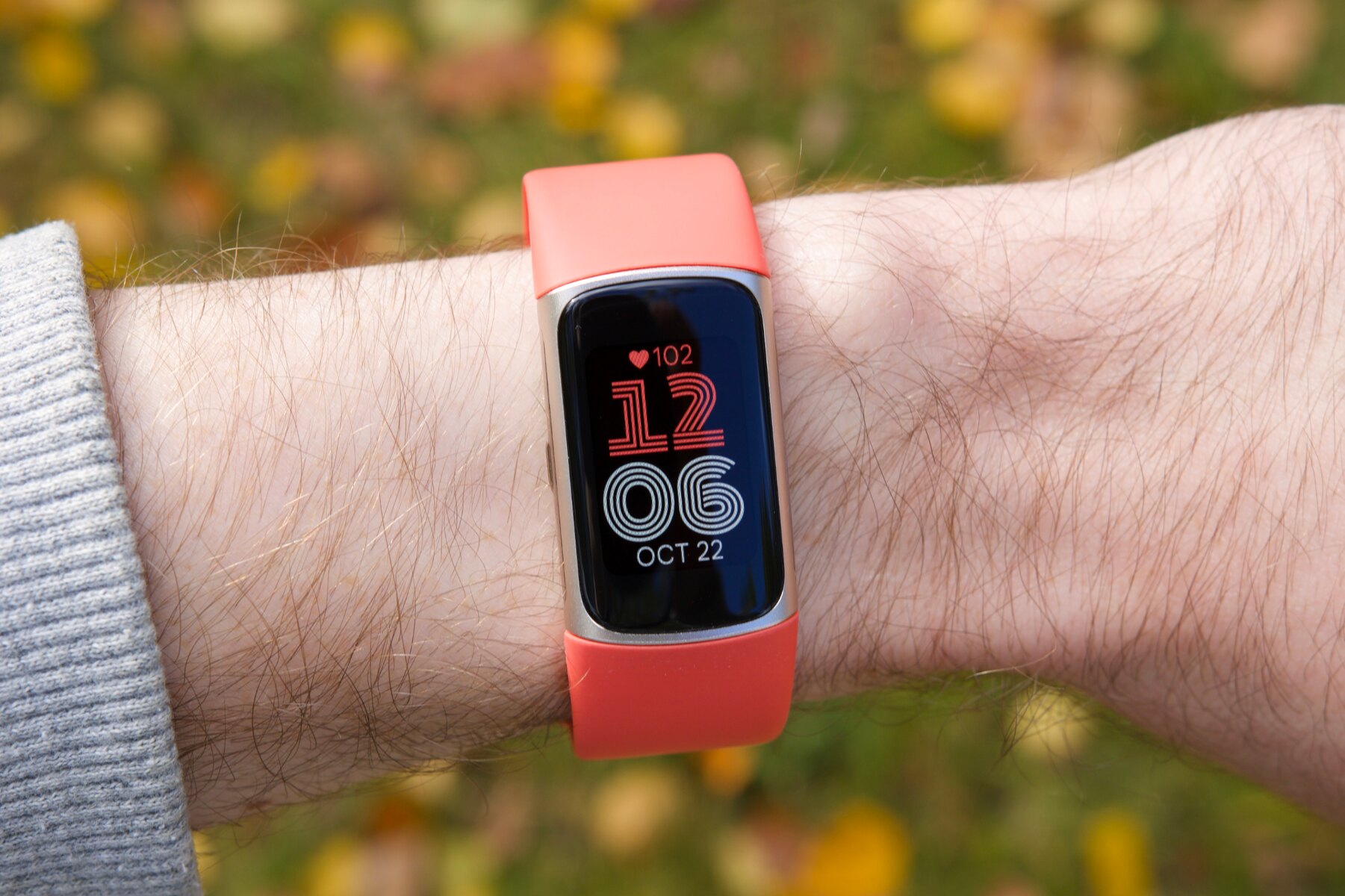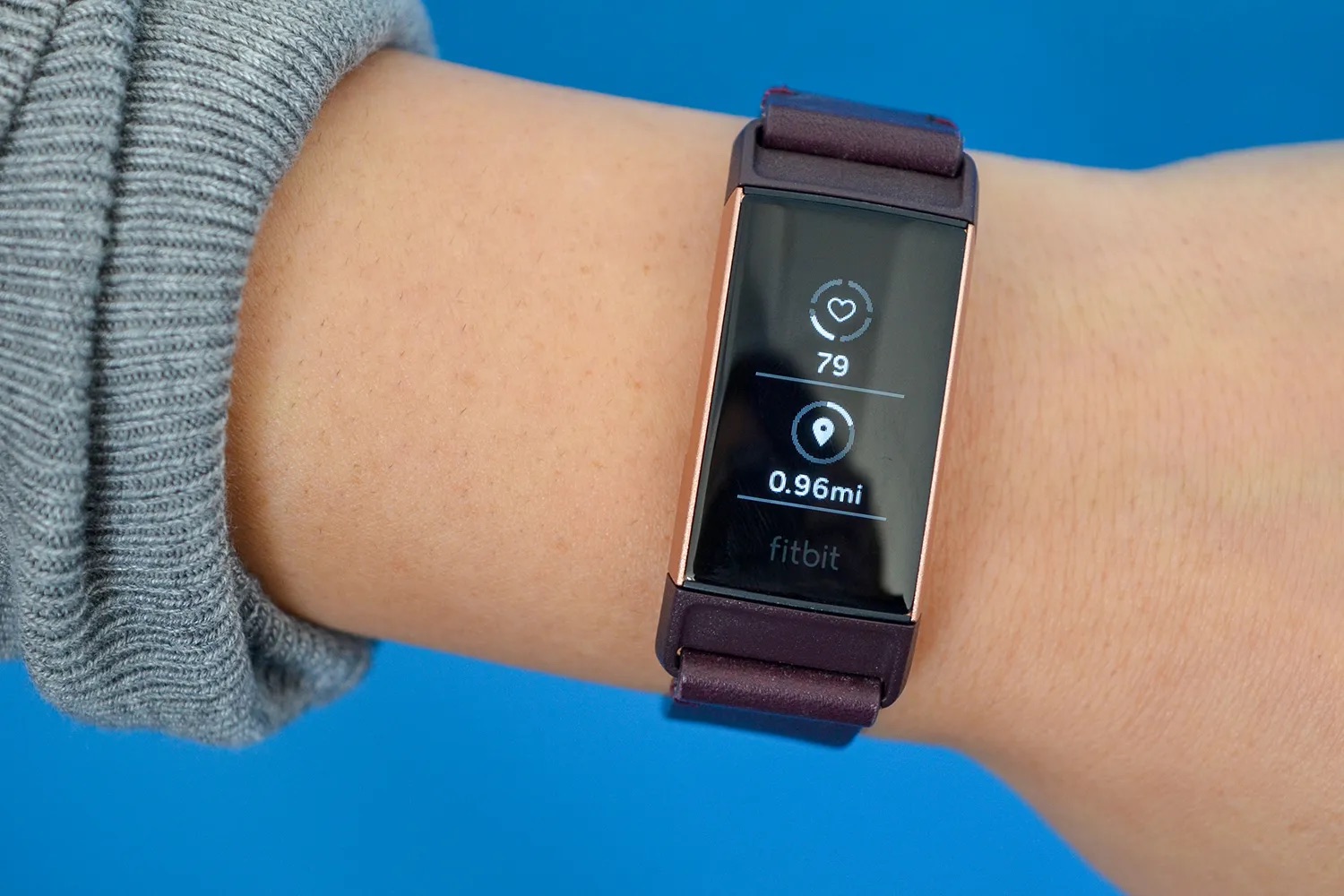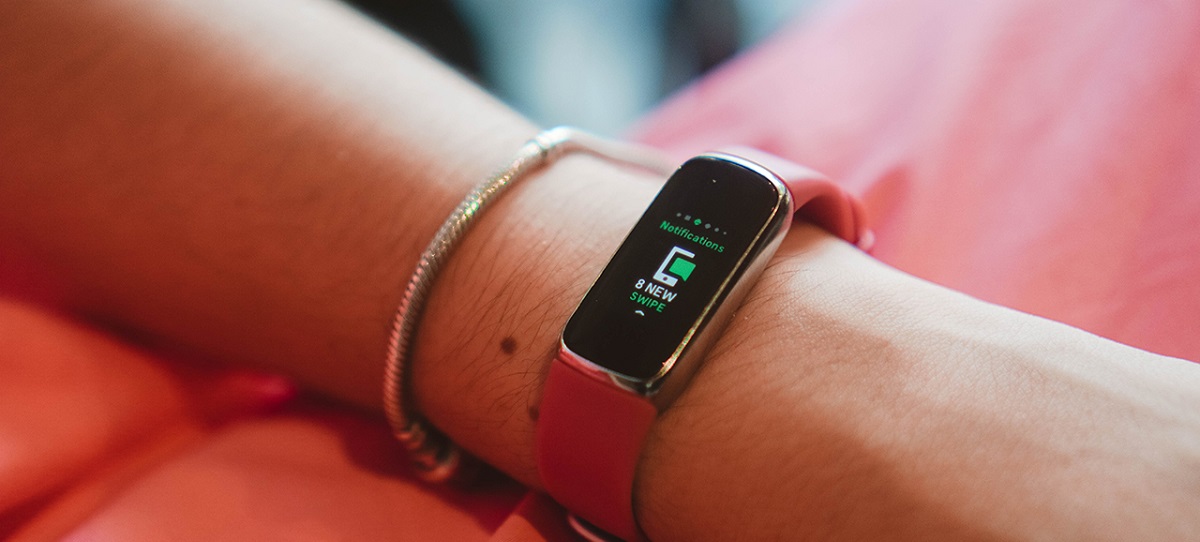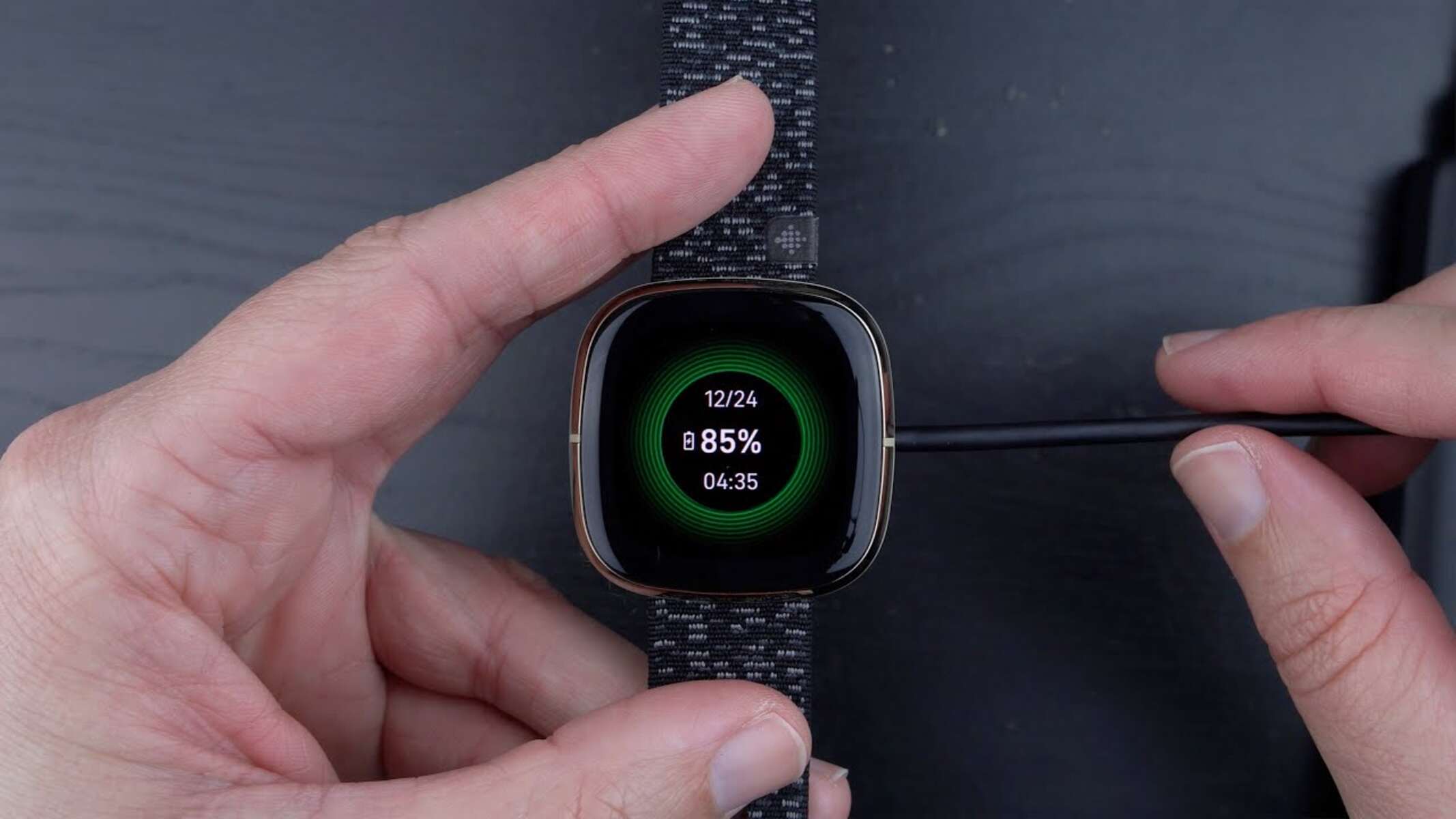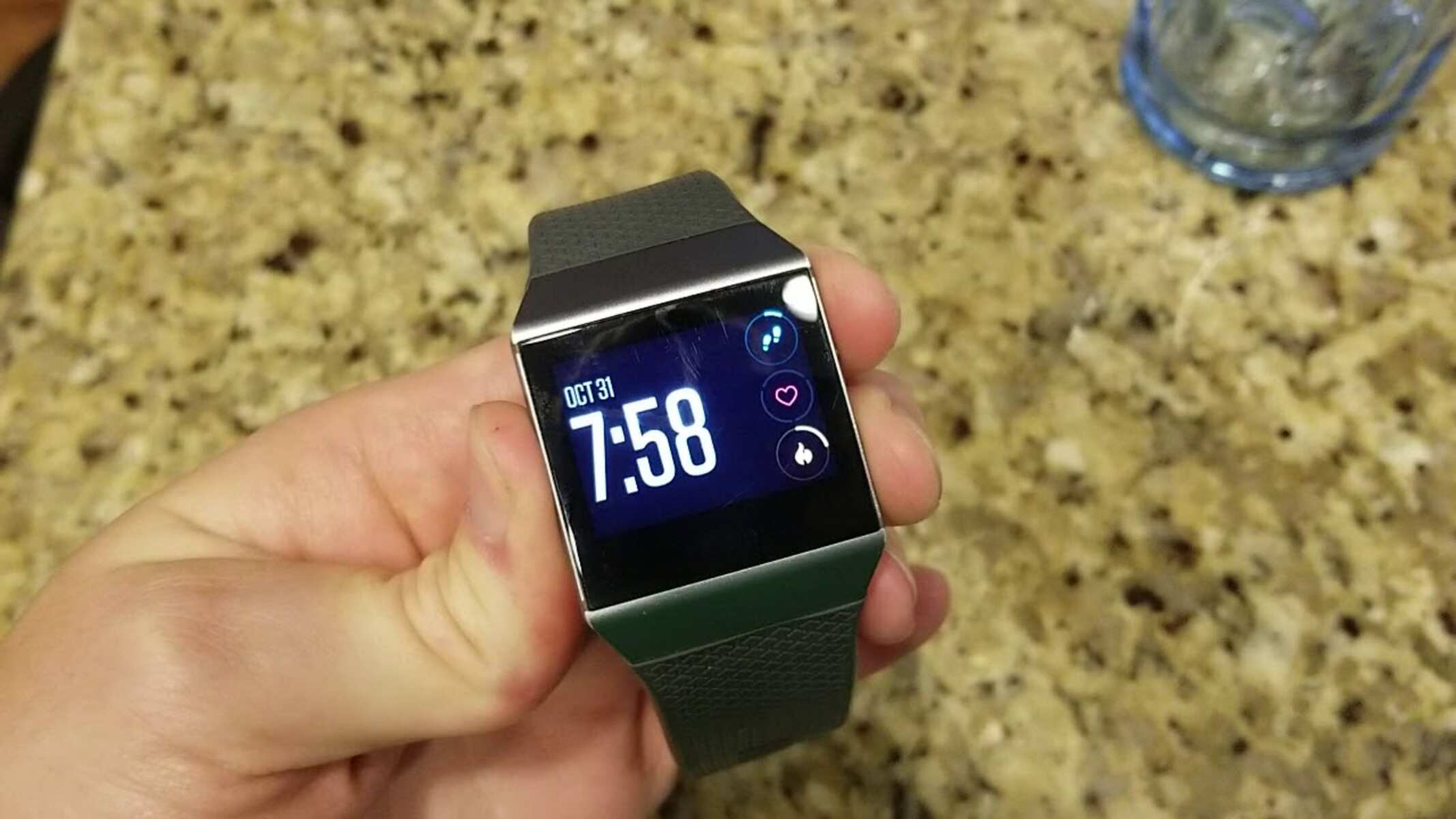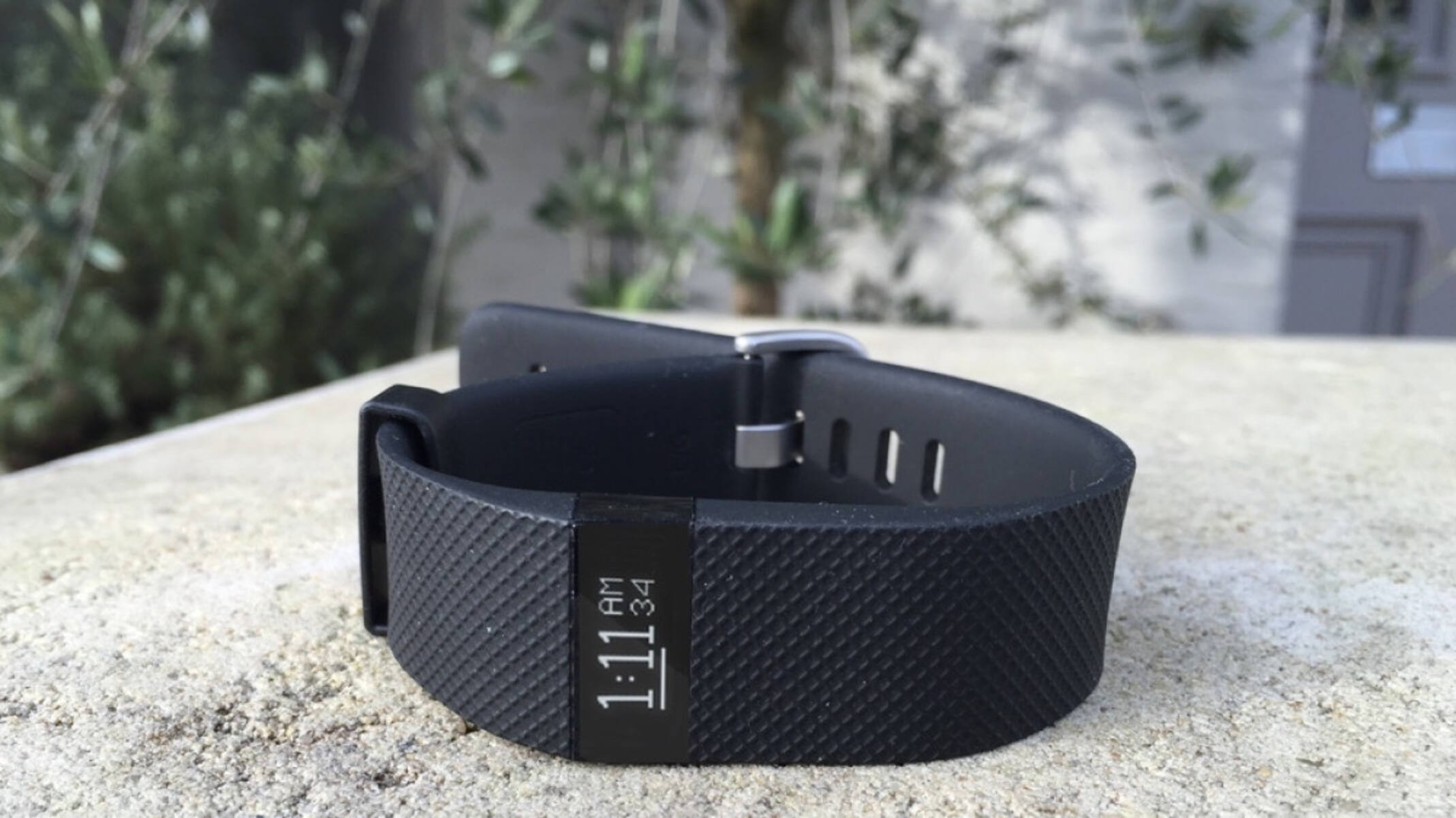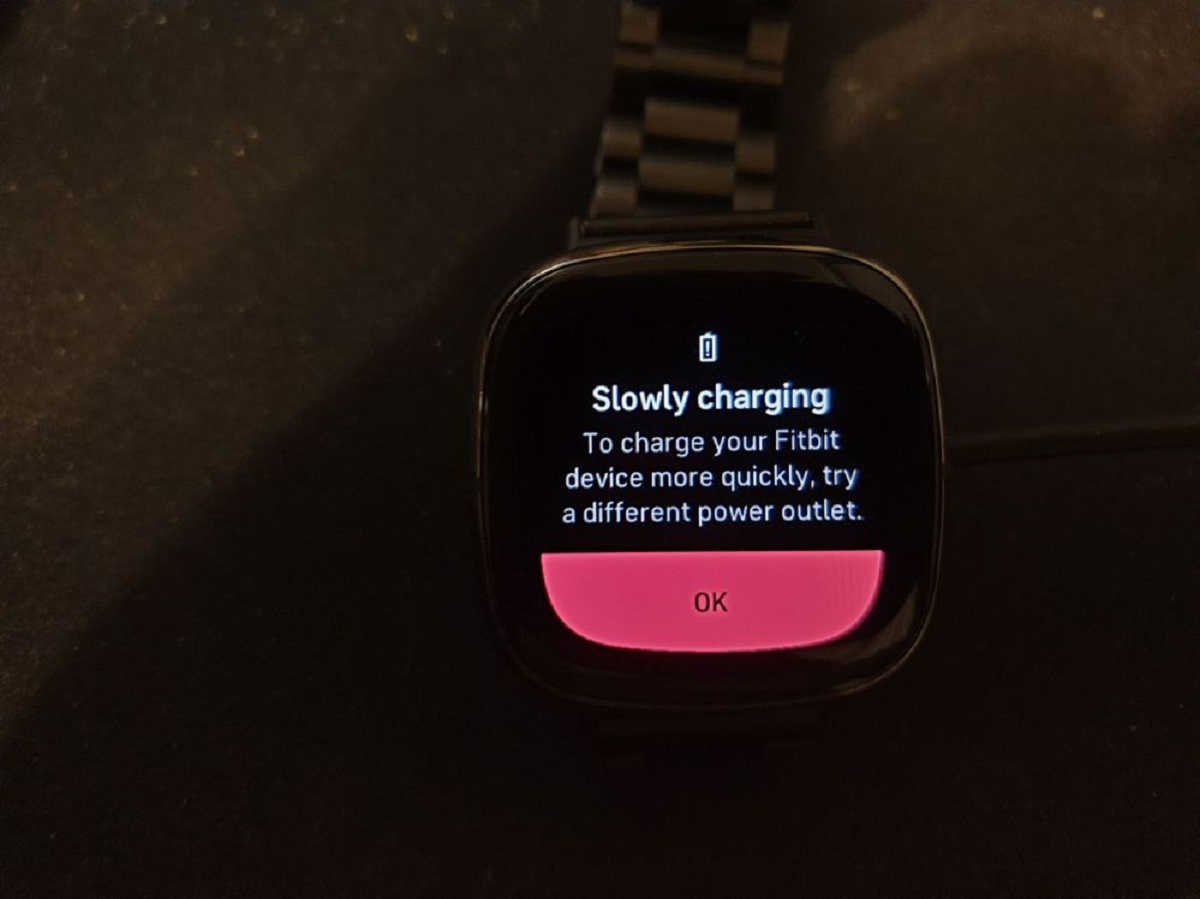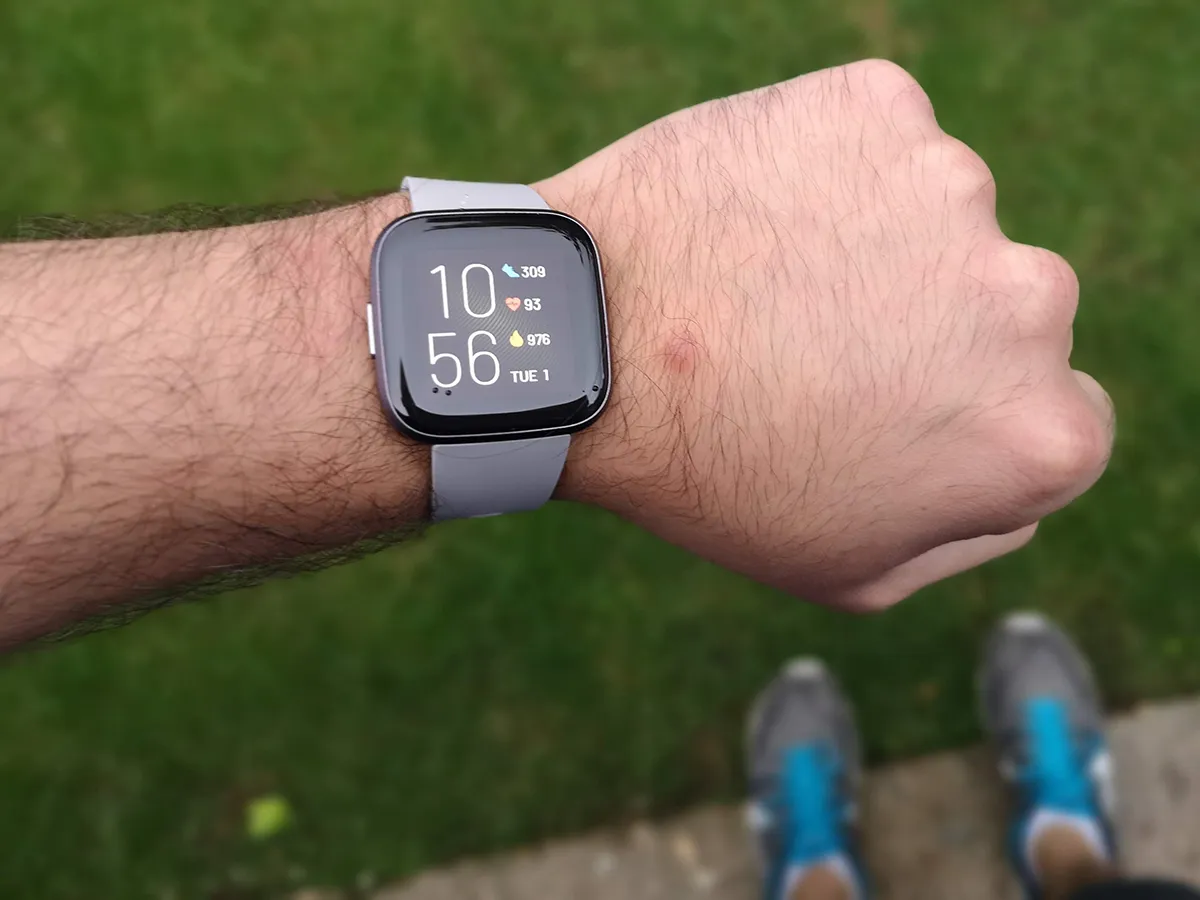Introduction
Ensuring that your Fitbit is charging properly is essential for maintaining its functionality and maximizing its potential benefits. A fully charged Fitbit enables you to track your physical activity, monitor your heart rate, and receive notifications seamlessly. However, encountering issues with the charging process can be frustrating and disrupt your daily routine. Fortunately, by following a few simple steps, you can quickly determine whether your Fitbit is receiving the necessary power supply and address any potential issues.
In this comprehensive guide, we will delve into the intricacies of verifying if your Fitbit is charging effectively. From examining the power source to troubleshooting common problems, we will equip you with the knowledge and insights needed to ensure a seamless charging experience for your Fitbit device. Whether you own a Fitbit Versa, Charge, Inspire, or any other model, the principles outlined in this guide are universally applicable and will empower you to resolve charging issues with confidence.
By understanding the key indicators of a successful charging process and familiarizing yourself with potential obstacles, you can proactively maintain the optimal functionality of your Fitbit. Let's embark on this journey together to unlock the full potential of your wearable device and ensure that it remains powered up and ready to support your active lifestyle.
Step 1: Check the power source
Before delving into the intricacies of your Fitbit device and charging cable, it's crucial to first assess the power source. Start by verifying that the power outlet or USB port you are using is functioning properly. Ensure that the power source is active by plugging in another device or using a different cable to confirm its functionality.
If you are using a wall outlet, check whether the outlet is receiving power by plugging in another electronic device. This simple test can help rule out any issues with the power source itself. Additionally, if you are using a USB port on your computer or a USB wall adapter, try connecting a different device to the same port to determine if it is providing a consistent power supply.
Once you have confirmed that the power source is operational, examine the connection between the charging cable and the power outlet or USB port. Ensure that the cable is securely plugged in and that there are no visible signs of damage to the cable or the charging port. A loose connection or a damaged cable can impede the charging process and lead to unreliable power delivery to your Fitbit device.
Furthermore, consider using a different charging cable to eliminate the possibility of a faulty cable causing the charging issues. By testing the charging cable with another compatible device, such as a smartphone or tablet, you can ascertain whether the cable is capable of delivering a consistent power flow.
By meticulously inspecting the power source and the charging cable, you can effectively narrow down the potential causes of charging issues with your Fitbit. This proactive approach empowers you to identify and address any underlying power supply issues, setting the stage for a successful charging process for your Fitbit device.
Step 2: Inspect the charging cable
The charging cable plays a pivotal role in facilitating the power transfer from the source to your Fitbit device. A thorough inspection of the charging cable is essential to identify any potential issues that may hinder the charging process. Here's how you can meticulously examine the charging cable to ensure its optimal functionality:
-
Visual Examination: Begin by visually inspecting the entire length of the charging cable. Look for any signs of fraying, kinks, or damage along the cable. Pay close attention to the areas near the connectors, as these are common points of wear and tear. If you notice any exposed wires, bends, or other forms of physical damage, it's crucial to address these issues promptly.
-
Connector Assessment: Carefully examine both ends of the charging cable, particularly the connectors that interface with the power source and your Fitbit device. Ensure that the connectors are free from debris, corrosion, or any foreign objects that may obstruct the connection. Clean the connectors using a soft, dry cloth to remove any accumulated dirt or residue that could impede the transfer of power.
-
Flexibility and Tension: Test the flexibility and tension of the charging cable by gently bending it along its length. A healthy charging cable should exhibit a degree of flexibility without feeling excessively rigid or overly loose. Pay attention to any areas where the cable seems excessively stiff or where it fails to hold its shape, as these could indicate internal damage or weakened insulation.
-
Trial Connection: Connect the charging cable to a power source and observe the interaction between the cable and the power outlet or USB port. Ensure that the cable fits securely and snugly into the port without requiring excessive force. Additionally, verify that the cable maintains a stable connection without slipping or disconnecting intermittently.
-
Functional Testing: Once the cable is connected to a power source, assess its functionality by confirming whether it successfully charges another compatible device. This test can help determine if the cable is capable of delivering a consistent power flow without interruptions or fluctuations.
By meticulously inspecting the charging cable through visual examination, connector assessment, flexibility and tension testing, trial connection, and functional testing, you can effectively identify and address any potential issues that may impede the charging process for your Fitbit device. This proactive approach empowers you to maintain a reliable and efficient charging experience, ensuring that your Fitbit remains powered up and ready to support your active lifestyle.
Step 3: Examine the Fitbit device
When troubleshooting charging issues with your Fitbit, it's crucial to thoroughly inspect the device itself to identify any potential factors that may impede the charging process. Here's a detailed exploration of the key aspects to consider when examining your Fitbit device:
-
Charging Port Inspection: Begin by examining the charging port on your Fitbit device. Ensure that the port is free from debris, dust, or any obstructions that could hinder the connection with the charging cable. Gently clean the charging port using a soft, dry cloth or a small brush to remove any accumulated particles that may disrupt the charging interface.
-
Device Condition: Assess the overall condition of your Fitbit device, paying attention to any signs of physical damage or wear. Look for cracks, scratches, or dents that could impact the device's ability to establish a secure connection with the charging cable. Additionally, check for any indications of water damage, as moisture or liquid ingress can interfere with the charging process.
-
Indicator Lights: Many Fitbit devices are equipped with indicator lights that provide visual feedback during the charging process. If your Fitbit has indicator lights, observe their behavior when the device is connected to the charging cable. Note any irregularities or unexpected patterns in the light display, as these could indicate underlying issues with the charging circuitry or battery.
-
Firmware and Software Updates: Ensure that your Fitbit device is running the latest firmware and software updates. Periodic updates released by Fitbit may include optimizations related to charging performance and battery management. By keeping your device's software up to date, you can leverage potential enhancements that address charging-related concerns.
-
Battery Health: Evaluate the overall health of the device's battery by reviewing its performance and longevity. If you have noticed a significant decline in battery life or if the device struggles to hold a charge, it may indicate a deteriorating battery that requires attention. Understanding the battery's condition can provide valuable insights into potential charging issues.
By meticulously examining the Fitbit device, including the charging port, overall condition, indicator lights, firmware and software updates, and battery health, you can gain a comprehensive understanding of its charging-related attributes. This proactive assessment equips you with the insights needed to address any potential device-specific factors that may impact the charging process, ensuring that your Fitbit remains powered up and ready to support your active lifestyle.
Step 4: Troubleshooting tips
When encountering charging issues with your Fitbit device, employing effective troubleshooting strategies can help identify and resolve underlying factors that may impede the charging process. Here are comprehensive troubleshooting tips to address common charging concerns and ensure a seamless charging experience for your Fitbit:
-
Restart or Reset: Initiate a soft reset or full restart of your Fitbit device to address potential software glitches that could affect the charging functionality. For many Fitbit models, performing a restart involves holding down the power button or following specific reset procedures outlined in the device's user manual.
-
Clean the Charging Contacts: Over time, the charging contacts on your Fitbit device may accumulate dirt, sweat residue, or debris, hindering the efficient transfer of power. Gently clean the charging contacts using a soft, dry cloth or a cotton swab lightly moistened with rubbing alcohol to ensure a clean and unobstructed connection with the charging cable.
-
Alternate Charging Methods: Explore alternative charging methods, such as using a different power outlet, USB port, or charging adapter. Sometimes, the issue may stem from the power source or the specific charging configuration, and experimenting with alternative setups can help isolate the root cause of the charging problem.
-
Update Fitbit Software: Ensure that your Fitbit device is running the latest firmware and software updates. Periodic updates released by Fitbit often include optimizations related to charging performance and battery management, addressing potential issues and enhancing overall charging reliability.
-
Battery Calibration: Perform a battery calibration procedure, if available for your Fitbit model, to recalibrate the battery gauge and optimize its performance. This process can help address inaccuracies in battery level reporting and ensure that the device charges and discharges effectively.
-
Contact Fitbit Support: If persistent charging issues persist despite troubleshooting efforts, reaching out to Fitbit's customer support can provide valuable assistance. The support team can offer personalized guidance, diagnose potential hardware issues, and facilitate the resolution of complex charging concerns.
By implementing these troubleshooting tips, you can systematically address charging issues with your Fitbit device, empowering you to maintain a reliable and efficient charging experience. These proactive measures enable you to identify and resolve potential obstacles, ensuring that your Fitbit remains powered up and ready to support your active lifestyle.
Conclusion
In conclusion, ensuring that your Fitbit is charging effectively is essential for harnessing the full spectrum of benefits offered by this innovative wearable device. By following the comprehensive steps outlined in this guide, you can navigate the intricacies of the charging process with confidence and address potential issues proactively.
The initial step of checking the power source serves as a foundational measure to verify the reliability of the power supply. By assessing the power outlet or USB port and inspecting the charging cable for any signs of damage or instability, you can lay the groundwork for a successful charging experience.
Thoroughly examining the charging cable and its connectors provides valuable insights into the integrity of the power transfer mechanism. Visual inspection, flexibility testing, and functional trials enable you to identify and rectify potential cable-related issues, ensuring a consistent and reliable power flow to your Fitbit device.
When delving into the examination of the Fitbit device itself, attention to detail is paramount. From inspecting the charging port and device condition to evaluating indicator lights and battery health, a holistic assessment equips you with a comprehensive understanding of the device's charging-related attributes.
The troubleshooting tips presented in this guide offer actionable strategies to address common charging concerns. By incorporating techniques such as device restarts, cleaning charging contacts, exploring alternate charging methods, and ensuring software updates, you can systematically address potential obstacles and enhance the charging reliability of your Fitbit.
By embracing a proactive approach to maintaining the charging functionality of your Fitbit, you can seamlessly integrate this powerful wearable device into your active lifestyle. Whether you rely on your Fitbit for tracking workouts, monitoring sleep patterns, or staying connected on the go, a consistently charged device ensures that you can leverage its full potential without interruptions.
In essence, the journey of verifying if your Fitbit is charging effectively is a testament to the proactive care and attention that you invest in optimizing your wearable technology. By leveraging the insights and strategies presented in this guide, you are empowered to uphold the seamless functionality of your Fitbit, ensuring that it remains powered up and ready to support your active pursuits.







